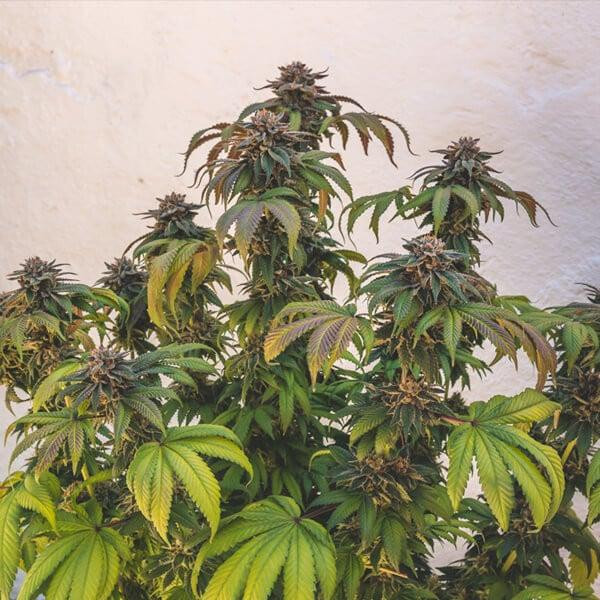In recent years, the world of cannabis cultivation has seen a surge in interest and innovation, thanks in large part to the growing acceptance of cannabis for both medicinal and recreational use in various parts of the world. Cannabis enthusiasts and cultivators have turned their attention to cannabis seeds as the foundation of their horticultural endeavors. In this comprehensive guide, we will explore the diverse world of cannabis seeds, from their types and characteristics to their cultivation and legal considerations.
Types of Cannabis Seeds
Regular Seeds: Regular cannabis seeds are exactly what their name implies – they are the standard, unaltered seeds obtained from the natural fertilization of a female cannabis plant by a male plant. These seeds can produce both male and female plants, making them a favorite choice for breeders looking to develop new strains.
Feminized Seeds: Feminized seeds are selectively bred to ensure that they produce only female plants. Since female plants are the ones that produce the coveted flowers (buds) rich in cannabinoids, such as THC and CBD, feminized seeds are highly popular among growers aiming to maximize their yield.
Auto-Flowering Seeds: Auto-flowering seeds have gained immense popularity due to their unique trait of transitioning from the vegetative stage to the flowering stage automatically, based on age rather than light cycles. This makes them an attractive option for novice growers and those looking for quicker harvests.
CBD Seeds: CBD seeds are bred to produce plants with high levels of cannabidiol (CBD) and low levels of tetrahydrocannabinol (THC). CBD is known for its therapeutic properties and is widely used for its potential health benefits without the psychoactive effects associated with THC.
THC Seeds: Conversely, THC seeds are bred to produce plants with high levels of THC, the psychoactive compound responsible for the "high" associated with cannabis. These seeds are often chosen by recreational users and those seeking specific THC-rich strains.
Characteristics of Cannabis Seeds
When selecting cannabis seeds, it's essential to consider several factors that can influence the outcome of your cultivation:
Strain: Different strains have distinct characteristics, including flavor, aroma, growth patterns, and cannabinoid profiles. Research and select a strain that aligns with your preferences and needs.
Yield: Consider the potential yield of the strain, as some are known to produce larger harvests than others. Yield is influenced by genetics, growing conditions, and cultivation expertise.
Growing Difficulty: Some strains are more forgiving and easier to grow for beginners, while others require advanced horticultural skills. Assess your level of experience before choosing a strain.
Flowering Time: The time it takes for a cannabis plant to transition from the vegetative stage to the flowering stage varies between strains. Auto-flowering strains tend to have shorter flowering periods.
Cannabinoid Profile: Depending on your desired effects, select a strain with the appropriate cannabinoid profile. For instance, if you're seeking pain relief without a "high," opt for a high-CBD, low-THC strain.
Cannabis Seed Cultivation
Successfully cultivating cannabis from seeds requires careful attention to various factors, including:
Growing Medium: Whether you choose soil, hydroponics, or another growing medium, it's crucial to provide the appropriate nutrients and conditions for your plants to thrive.
Lighting: Cannabis plants require the right amount and type of light to grow and flower. Indoor growers often use high-intensity discharge (HID) lights, fluorescent lights, or LED lights, while outdoor growers rely on natural sunlight.
Nutrients: Proper nutrient management is essential for healthy plant growth. Cannabis plants require specific macronutrients (nitrogen, phosphorus, potassium) and micronutrients (calcium, magnesium, iron) at different growth stages.
Watering: Overwatering or underwatering can lead to problems like root rot or nutrient deficiencies. Maintain a consistent watering schedule and monitor soil moisture levels.
Pruning and Training: Trimming, pruning, and training your plants can optimize their growth, improve light penetration, and increase yields.
Legal Considerations
It's vital to be aware of the legal status of cannabis cultivation in your region before growing cannabis seeds. Laws and regulations regarding cannabis cultivation vary widely worldwide. In some places, it's legal for adults to grow a limited number of plants for personal use, while in others, cultivation may be strictly prohibited. Always research and adhere to local laws and regulations to avoid legal issues.
For More Info:-






Comments